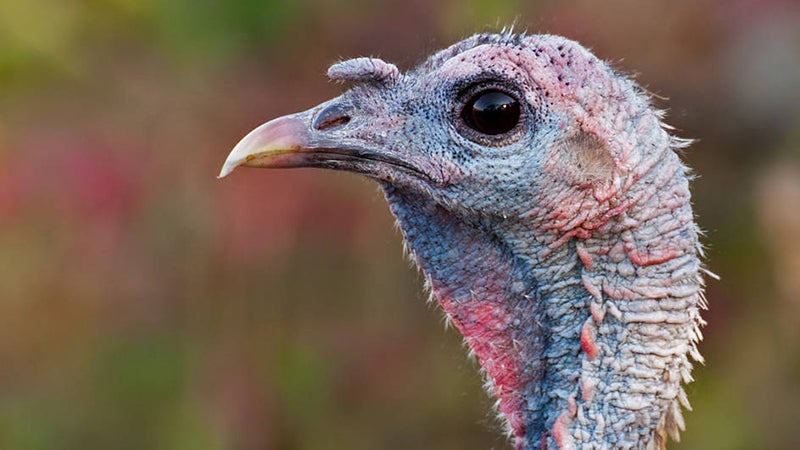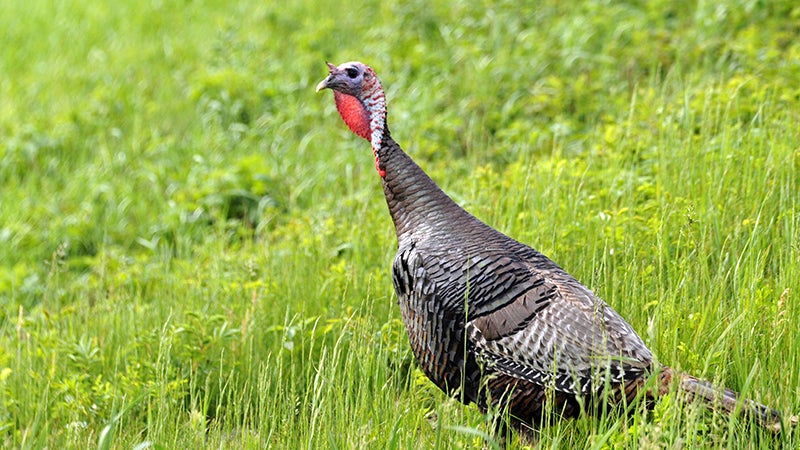Let’s talk turkey and native plants that support Mississippi wildlife
Published 7:00 am Wednesday, November 25, 2020
By Pat Drackett
Crosby Arboretum Director
Visitors to the Crosby Arboretum sometimes inquire about the kinds of wildlife we see on our property, such as deer, wild hogs, or flocks of wild turkeys. I’ve seen deer, gray and red foxes, and even a very rare bear who had decided to take a rest in the middle of our service road, but thankfully I’ve never encountered a wild hog, and although I’ve spotted turkeys foraging along area roadsides, I haven’t seen them in our exhibits.
Did you know the wild turkey was almost our national bird? When the colonies declared their independence from England, they were tasked with finding a symbol that was fitting for the new national seal. Benjamin Franklin felt that the wild turkey was a perfectly respectable choice for the new emblem. Although others favored the bald eagle, Franklin believed that eagles were not worthy of such recognition. Obviously, he was outvoted!
Turkeys are the largest North American game bird. Adult male turkeys, called toms or gobblers, can weigh up to 24 pounds. Their brightly colored feathers, in coppers, reds and greens, come in handy when they are looking to attract females during the breeding season. Female turkeys are called hens and are much drabber in color, which helps provide camouflage when they are on their nests.
Wild turkeys forage for food on the ground, and consume berries, nuts, seeds and sometimes even small animals such as frogs or salamanders. According to MSU Extension Service Publication 2033, “Forest Management for Wild Turkeys,” the birds will also eat insects such as grasshoppers, millipedes, insect larvae, and worms and snails. Young turkeys eat mostly insects in their first few weeks after hatching, and then will begin to pick up fruits and seeds. The Extension publication notes that most turkey nests are located within 10 yards of a forest edge, such as a logging road or firebreak.
Turkeys consume “soft mast” such as fruit from dogwood, blackberries and dewberries, huckleberries, blackgum, spicebush, muscadine and wild cherries. They will also eat seeds of longleaf pine, sweetgum and magnolia.
According to the Extension publication, turkeys will roost in a variety of forest habitats, but most often will roost in conifers located near water.
Trees such as bald cypress and spruce pine can offer them attractive habitat in such areas. Spruce pine, which is found in the Arboretum’s exhibits, is also known as “turkey pine” because its branches often grow full to the ground, offering the birds a perfect spot for an overnight stay.
The National Wild Turkey Federation (http://www.nwtf.org/) is a national nonprofit organization that along with its members helps to restore land that supports North American turkey populations. In addition to wild turkeys, hundreds of species of upland wildlife, such as quail, deer, and songbirds, have benefited from the improved habitat.
The NWTF website includes links for sources of tree seedlings that are “ice cream” to turkeys, including Chickasaw plum, common persimmon, and southern crabapple, and oaks such as nuttall, cherrybark, shumard, water, white and swamp chestnut oak. They will also eat acorns, known as “hard mast,” which is the dried fruit of woody plants that fall to the forest floor, such as acorns and nuts from tree species such as hickory, pecan, walnut and beech.
Turkeys will consume fruit from hawthorn trees. In our area, two well-known species of hawthorn are the parsley hawthorn (Crataegus marshallii) and mayhaw (Crataegus opaca). Many of you will be familiar with the tasty jelly made from mayhaw fruit, and turkeys may have to get up pretty early to beat the dedicated jelly-makers to these native trees. Both hawthorn species make beautiful accent trees for your home landscape because of attractive white flowers in spring. But take care when locating them in your yard as they are thorny, although the fruit crop may cause you to quickly forgive this characteristic!
The Crosby Arboretum will close at noon this Wednesday, November 25, and is closed on Thanksgiving. We are open this Friday, Saturday and Sunday.
Do you have family or friends in town for the holidays? Bring them out to our unique public garden to walk our three miles of walking trails that pass through our educational exhibits representing a variety of coastal Mississippi ecosystems and the native plant communities found within them. Leashed pets are always welcome! We are open Wednesday through Sunday and located in Picayune, I-59 Exit 4, at 370 Ridge Road. Exit gates are closed at 4:30 p.m. The business office is open 9 a.m. to 5 p.m.





